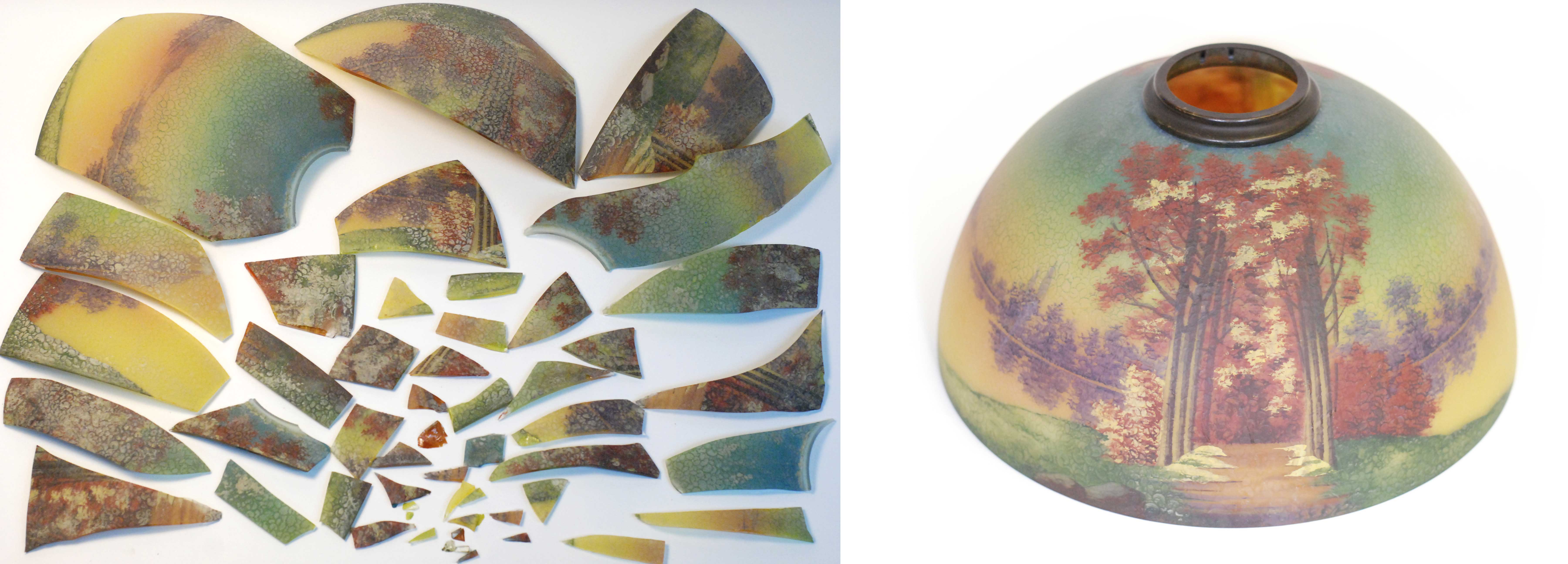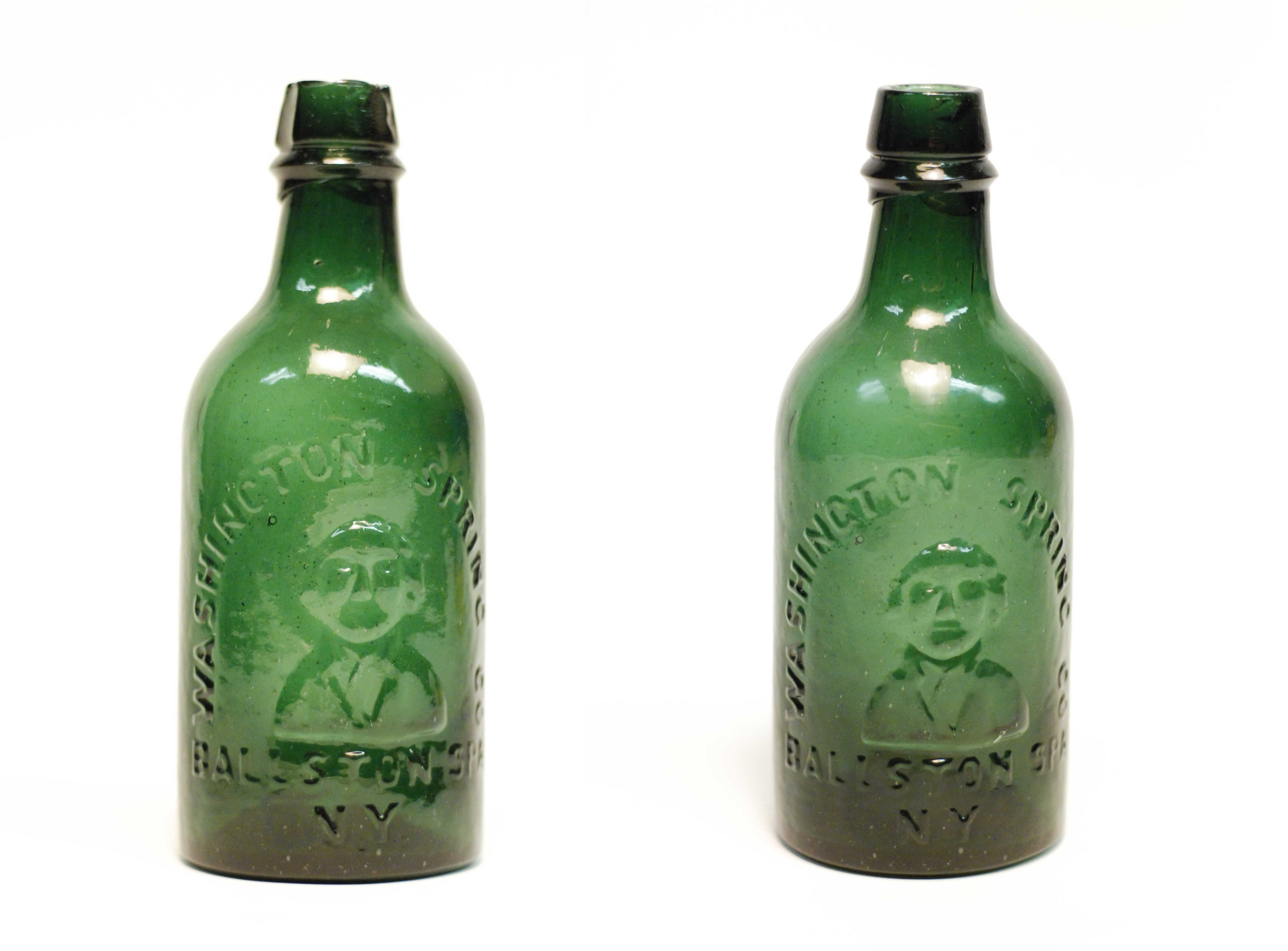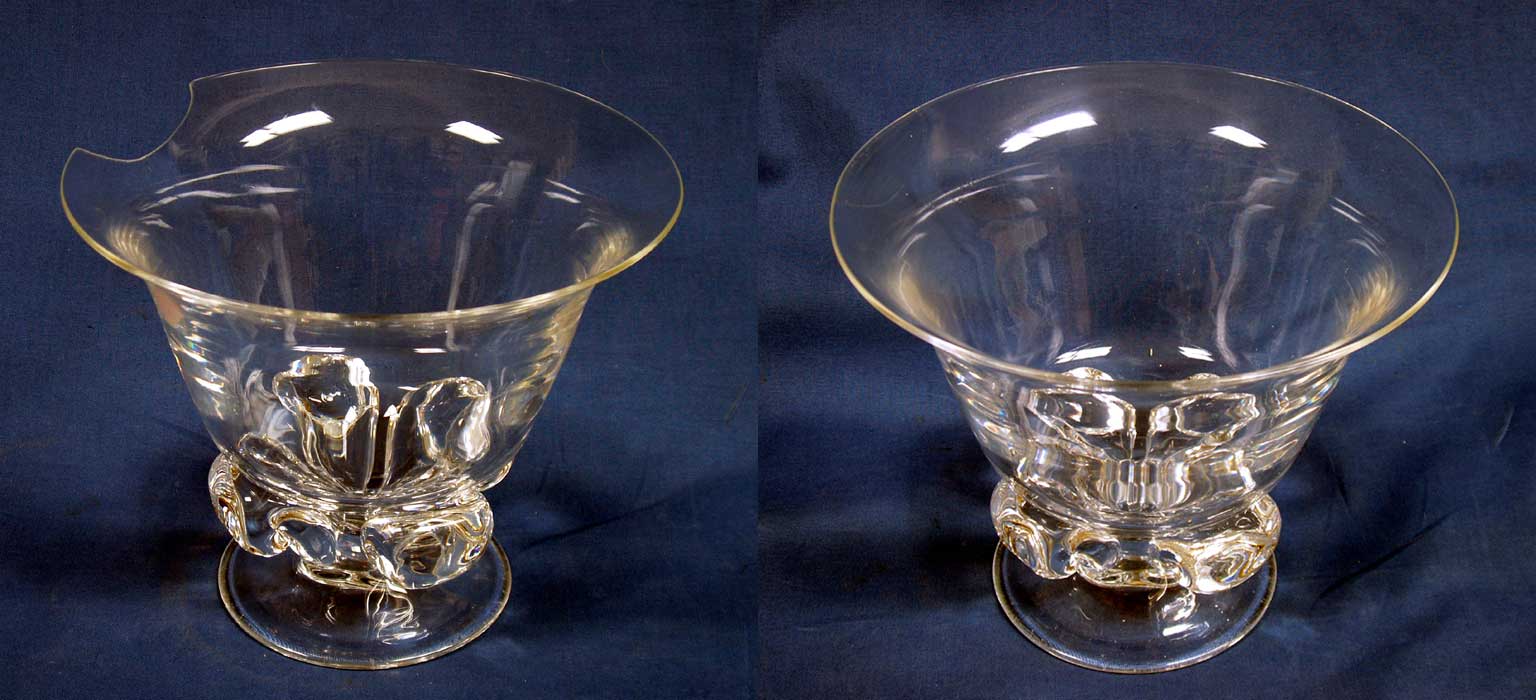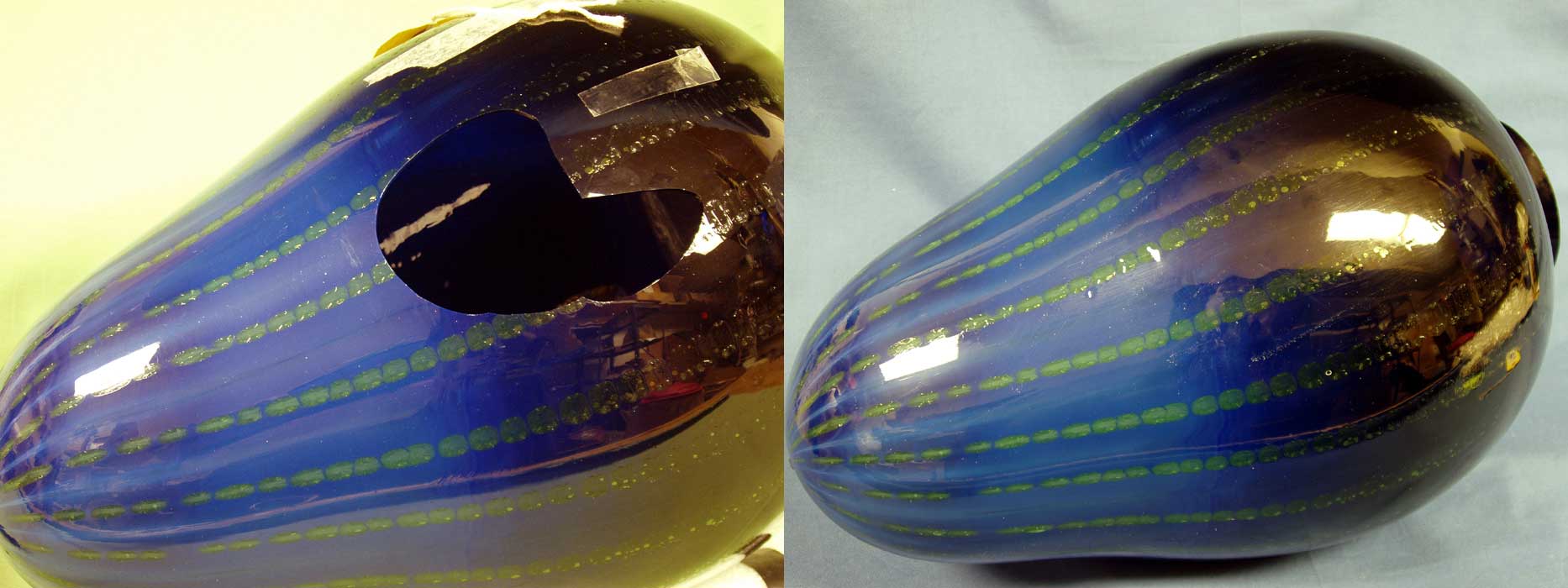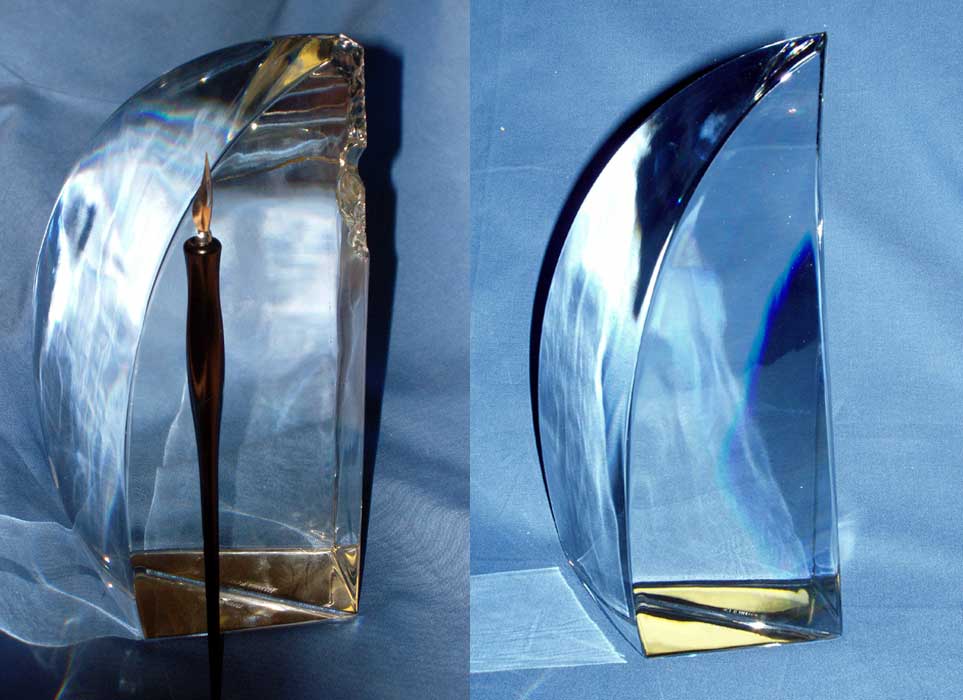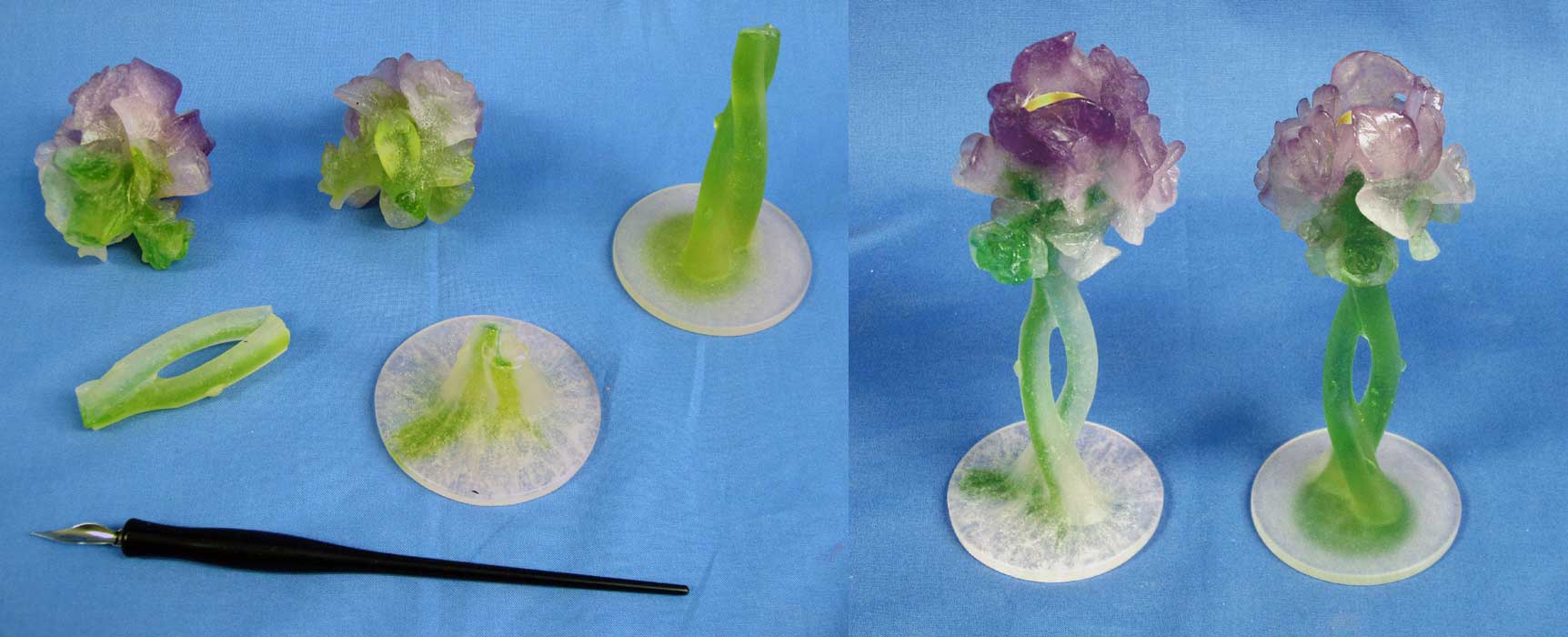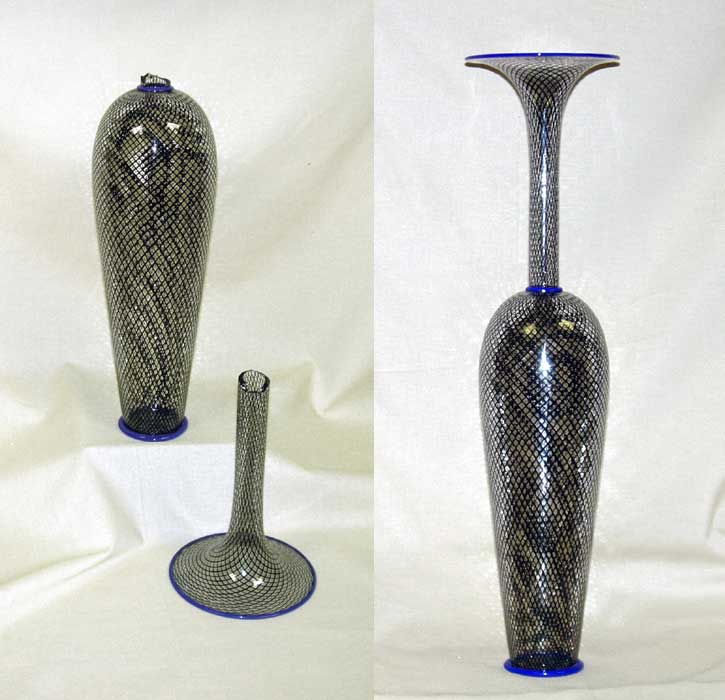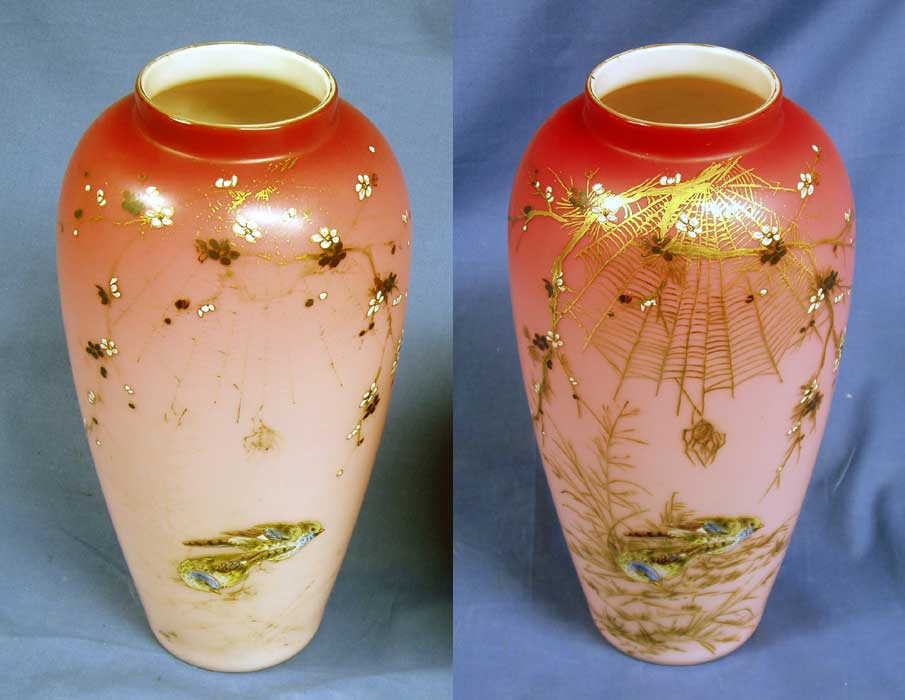
This “Sunburst Snuff Jar,” manufactured in Keene, New Hampshire, sometime between 1815 and 1830, is one of the most sought-after glass bottles by collectors. We've had the pleasure of working on two of these bottles. Unfortunately, all but a couple still in existence are damaged in one way or another. This example came to us with a fairly sizable crack that had quite a dramatic impact on how the bottle displayed. Glass has a tendency to be somewhat unpredictable when it ...


